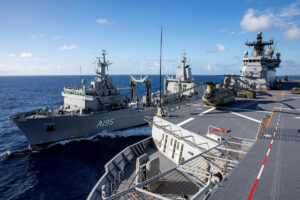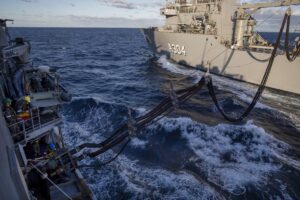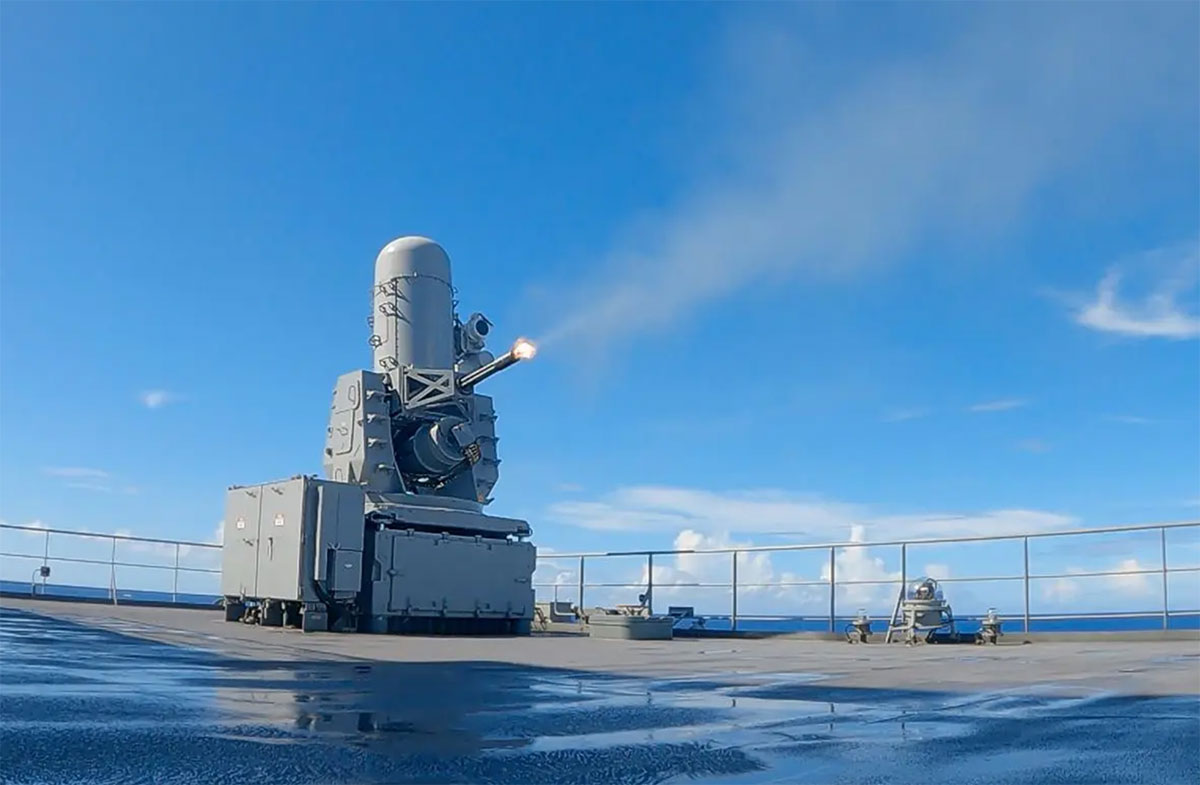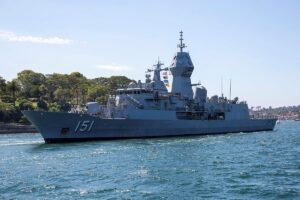First things first: The Royal Australian Navy has a new Chief since the day before yesterday, 6 July 2022! Vice Admiral Mark Hammond succeeded the "outgoing" Chief of Navy, Vice Admiral Michael Noonan, who had led Australia's navy "down under" for the last four years.
During his time, the unpredictable pandemic, the most severe bushfires and floods in south-east Australia took place, during which the navy was not only deployed continuously along the coast. In addition, the permanent presence in the East Indies and Western Pacific, which has become increasingly urgent with the growing presence of Chinese units. "Dynamic times need an evolving navy": 15,000 new posts had to be filled during his time. The two new Hobart-class frigates "Brisbane" and "Sydney", as well as the supply ships "Supply" and "Stalwart" were commissioned. The first of the twelve Arafura-class OPVs (NUSHIP, Lürssen) and the first guard boat of the modified Cape-class have taken up their duties. Vice Admiral Noonan served 38 years in the RAN.
The new Chief of Navy may well continue on this course: by the end of the next decade, the Navy is to grow by a further 20,000 posts, and at least eight new nuclear submarines are to be built under the trilateral AUKUS agreement. Hammond began his service as an officer in 1986 as an electrical engineer and graduated as an officer two years later from the Australian Defence Force Academy, becoming its first graduate to rise to the rank of CoN. As a submariner he commanded Her Majesties Australian Ship Farncomb (Collins class, Kockums Type 471), sailing aboard British, French and American nuclear powered attack submarines as well as a Dutch flagged conventional boat. Of course, he has also been seen on board normal fat ships! The RAN saw him in his last assignments as fleet commander and as Noonan's deputy.
The disputes over the "rustic" design have also been settled. Cancellation of the contract already negotiated in 2016 with the French state-owned Naval Group for the construction of twelve conventional submarines worth 31 billion euros at the time. Nine months ago, Prime Minister Scott Morrison cancelled the contract unilaterally and without any intention of compensation, after he had already committed to the construction of at least eight nuclear submarines of common technology as part of the AUCUS agreement with the UK and the US. Following the recent change of government at the end of May, the new Prime Minister Anthony Albanese is very keen to restore the broken relations with France and immediately (mid-June) negotiated a "contractual penalty" of 555 million euros in order to resolve the dispute and also to be able to focus on the tasks in the region with France. This submarine contract with France, which was botched from the outset, has cost the Australian taxpayer around €2 billion without the government having anything concrete to show for it apart from talks and planning. Could there be political repercussions and could someone be held accountable? It should not directly harm the navy, as the key decisions were made elsewhere.

The two new Supply class fuel suppliers have already been named.
In mid-February, HMAS Supply carried out the first sea supply operations with HMAS Adelaide, the second Canberra-class helicopter dock landing ship, as part of "Operation Tonga Assist 2022". The ability to handle refuelling and general cargo supply by highline and also as a helicopter representative was successfully demonstrated.

A good three months later, HMAS Stalwart was also able to confirm that it had mastered the RAS supply procedures in cooperation with the Anzac-class frigate HMAS Parramatta and was awarded the "Mission Ready" certificate. In addition, of course, all the other tasks required for sailing in a fleet formation had to be mastered. The commander then declared his unit "open for business" to the rest of the navy. Both ships were built by Navantia in Spain and are based on the Armada's Cantabria-class supply ship design.
Last but not least, at the beginning of July HMAS Supply demonstrated the functionality of the CIWS Phalanx (close-in weapon system) in a live-firing together with the "Canberra" and the Anzac frigate "Warramunga".

The eight MEKO 200 frigates of the Anzac class that have been in service with the RAN since 1996/2008 have been undergoing their "Anzac Midlife Capability Assurance Programme".

In this way, the frigates are to remain operational until the new Hunter-class frigates (Arrowhead design, BAE Systems Type 26) can take over their tasks from 2031 at the latest. HMAS Perth, Stuart, Arunta and Anzac were the first to receive their extensive modernisations. These are best recognised by the removal of the conventional Raytheon SPS49 antenna and the upwardly enlarged mast structure, which now also integrates the new digital air surveillance radar (phased array). Among others, Saab Australia and BAE Systems contributed to bringing various command, sensor and weapon systems within the ships up to the state of the art. At the end of April, HMAS Warramunga - for whatever reason called "Purple Pony" - became the fifth ship to return from the 18-month shipyard period and is now entering the functional certification and training phases to regain full operational capability.
See also the video: https://youtu.be/U_zSgWlXgas










